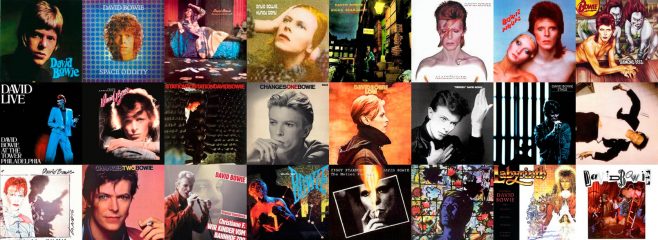
“Heroes” is David Bowie’s 12th studio album, originally released on 14th October 1977.
By mid 1977, David Bowie was beginning to sort his life out. After his drug-induced nightmarish 1975-76 existence in Los Angeles, he managed to escape with his buddy-in-crime Iggy Pop to Europe, where he recorded his pioneering “Low” album. He then battled both his record company RCA and not one but two ex-managers to get the album actually released, after they all believed the album to be some weird, noncommercial joke designed to intentionally ruin his career. He was even starting to effectively manage his quickly disintegrating marriage with his then wife Angie Bowie.
Life was indeed finally beginning to pick up.
Having moved with Iggy Pop into a small apartment in the district of Schöneberg in West Berlin, he was ready to record a new album. “Low” released at the start of 1977 was a huge departure for Bowie, an experimental album featuring ambient like instrumental pieces, with few vocals and on side 2 in particular, very little in relation to conventional “rock ‘n’ roll music. Inspired by many of the current German Krautrock bands such as Tangerine Dream, Neu! and Kraftwerk, Bowie teamed up with Brian Eno to record one of the most influential albums of all time, a blueprint of music that would dominate the charts for the next 10 years.
Having recorded both “Low” and then “The Idiot” for Iggy Pop in the past few months, Bowie was ready to hit the studio again. But this time, rather than feeling “Low”, Bowie now felt like a “Hero” and the new music would certainly reflect this increase in optimism. Teaming up again with Tony Visconti as producer, Brian Eno as musical strategist and his rhythm section of Carlos Alomar, George Murray and Dennis Davis, Bowie added the guitar great Robert Fripp of King Crimson fame to bring an extra dimension to the overall sound.
Recorded at the Hansa Tonsudio in Berlin, it’s actually the only album from the so-called “Berlin Trilogy” to be fully recorded in Berlin. And what a truly wonderful album it is too.
Setting the mood for much of the album, the opener “Beauty and the Beast” has Bowie showing off his updated “histrionics” style of singing, not really heard since the “Ziggy Stardust” album. With a slow building intro, Bowie enters the scene with a growl and kicks off this jumpy, catchy number with a powerful vocal performance. The music here is still very “electronic” in form, but with the rhythm section very prominent, it’s a return to a more rock ‘n’ roll sound (on side 1 at least). The meaning of the lyrics is typically obscure, with some suggesting it’s perhaps a reference to Bowie himself during his cocaine fuelled mood swings. Released as the second single off the album, it just made it into the UK top 40 but failed to chart completely in the US.

“Joe the Lion” is based on the adventures of Chris Burden, who famously nailed himself to the roof of a Volkswagen during a piece of “performance art” (a theme that Bowie would explore further with Eno on the “Outside” album). With the music dominated by Robert Fripp’s guitar, Bowie is again in fine vocal form, with the line “It’s Monday” sung to utter perfection to describe most people’s feeling on returning to work on a Monday. You can put this track down as yet another of Bowie’s hidden gems.
The centrepiece of the album is undoubtedly the title track “Heroes”. Here in it’s full 6 minute length glory, it is one of THE best Bowie anthems, period. It’s one of those songs I have never, ever tired of hearing and sounds as fresh, modern and brilliant now as it did over 40 years ago. I can still recall the excitement when I first heard the full length version in my bedroom in Manchester all those many years ago. It’s hard to break this classic track down but the driving energy here is hypnotic, Robert Fripp’s various layered guitar parts are simply stunning, the build up in tempo is just gorgeous, while Bowie’s vocal performance is one of his very very best. It’s just a wonderful song on the triumph of love over adversity and how we can all indeed be heroes by just being ourselves.
Proving Bowie was serious about reconnecting himself with Europe, he recorded both an excellent German and (less convincing) French version of this song to be released as appropriate in the local European market.
Remarkably, the single was a relative flop at the time, only reaching 24 in the UK and not breaking the top 100 in the US. However, its reputation has only grown over time, having been covered by numerous artists over the years and often listed in the greatest songs lists. You can watch the video here.
In 1980, a special single was released in Australia that featured all 3 language versions of “Heroes” as well as the B-Side “V-2 Schneider”.
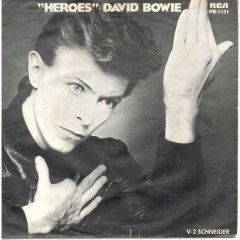
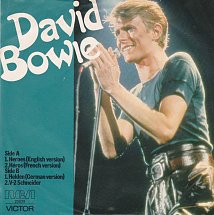
“Sons of the Silent Age” is a wonderful piece, evoking images simultaneously of a by-gone Hollywood era but haunted by some of the other worldly demons from The Man Who Sold The World/Hunky Dory era. The sax work here is beautiful unlike some of the weirdness to come but the highlight is the wonderful chorus featuring some of Bowie’s best ever vocal work. A Bowie classic that got an unlikely resurrection when performed live during the “Glass Spiders” tour in 1987.
“Blackout” which closes side 1 is another intense classic. In part documenting an actual blackout Bowie had when he was rushed to hospital earlier in the year in Berlin, it also references power “blackouts”, giving the track a double meaning. Dennis Davis’s drum work, superb throughout the album, is particularly good here and drives along the piece. The “kiss you in the rain” refrain is just great as are indeed the little bits of humour in how Bowie delivers some of the lines, such as when he sings “get me the Doctors, get off the streets, get me on my feet” which are brilliant. Another song I just adore from the album.
Side 2 opens with “V-2 Schneider“, the first of the (mainly) instrumentals that features on the second half of the album, copying the format from the “Low” album. This is the most “rock-like”, conventional instrumental piece on the album, with the rhythm section driving along a groovy beat, before the out of sync sax jumps in to create a jarring feel that sounds fantastic but not quite right all at the same time. An obvious nod to Florian Schneider from Kraftwerk and the infamous German V-2 rockets from WWII, the only lyrics on the track is “V-2 Schneider” sung in ever more clear fashion as the track progresses. This is perhaps my favourite instrumental piece from the whole Berlin era period. It featured on the B-side of the “Heroes” single.
“Sense of Doubt” is another matter entirely, the first of the three really “out there” instrumentals” that is clearly heavily influenced by Brian Eno. Based a 4 note refrain, it’s the perfect soundtrack to anyone interested in slowly lifting up a recently dug up coffin lid. Full of bizarre soundscapes, it’s a truly eerie piece that does indeed make one have a severe sense of doubt. If this is rock ‘n’ roll, then it’s an entirely new, original brand. The B-side to the “Beauty and the Beast” single, I would doubt make DJs would have played this in a disco…
“Moss Garden” then seamlessly joins the party, a Japanese influenced piece that features Bowie plucking on a Koto, with washes of sounds in the background. As Bowie sings on “Blackout”, he’s indeed very influenced by Japan and this track perfectly encapsulates the dreamy feeling of sitting quietly in a moss garden somewhere in rural Japan.
The third off-centre instrumental is “Neuköln“, the district in Berlin where Bowie and Iggy Pop lived during the making of the album. Featuring Bowie on sax, if you’ve ever wondered what a sax would sound like if you slowly strangled it, wonder no more and simply listen to this track. Again, one has an uneasy sense as you listen to the various soundscapes, but the whole piece ties in together so perfectly. That someone of Bowie’s statue would consider recording ambient music so clearly non-commercial and avant garde was a huge risk, but one that really paid off and established Bowie as a musical pioneer.
Just when you’re thinking what on earth could come next, Bowie surprises with “The Secret Life of Arabia“, an absolute gem of a track and a return to the Side 1 type material. Except this is more bouncy and catchy than anything on Side 1, with the possible exception of the title track. The rhythm section are just brilliant here. This time evoking images of Laurence of Arabia and hot sandy deserts, Bowie again sings with tongue firmly in cheek in another classic vocal performance. I simply LOVE this track and is perhaps the hidden gem in all his Berlin-era work. It’s the perfect way to end a perfect album that is also a rather nice segue to the next album, “Lodger” that features a number of romantic travel influenced tracks.
The album features one of the most iconic of Bowie’s album covers, a leather clad Bowie photographed by Masayoshi Sukita as he posed in the same manner as the character in the painting Roquairol by German artist Erich Heckel.
At the time of the album release, RCA marketing come up with the prefect slogan: “There’s old wave, there’s new wave and there’s David Bowie“. Which perfectly sums up the album (and the preceding “Low”), as being something that hadn’t really been commercially heard before, but would map out popular music for the next 10 years and beyond. It’s hard to overstate the incredible influence “Heroes” has had on so many future bands.
In short, “Heroes” was a triumph of an album, a true masterpiece which at the time had much critical acclaim. Both of the two main UK music papers (Melody Maker and NME) named the album as their album of the year, although commercially it had mixed success, reaching No. 3 in the UK charts, but only No. 35 in the US.
As part of the excellent Ryko 1991 CD re-release, it included the following previously unreleased track from the Berlin-era period:
“Abdulmajid“, is a nice enough instrumental, featuring the rhythm section with a cool synthesizer based melody. But it certainly doesn’t have the wow factor of the album proper instrumentals and is a nice bonus rather a must have addition to the album. The title is clearly from the time of the release, being Bowie’s newly recent wife’s name.
Bowie would spend much of 1978 touring the Low/Heroes albums (with a good dose of Ziggy Stardust thrown in) as part of the Isolar II world tour, the largest Bowie tour to date that finally included Australia for the first time.
The resultant “Stage” live album was another way to enjoy several of the track off “Heroes”, although the album was criticised (somewhat unfairly) as sounding almost identical to the actual album versions with some background crowd noise due to the superb musicianship on display. The 5.1 remix released on DVD in 2005 is well worth a listen and adds another dimension to the tracks.
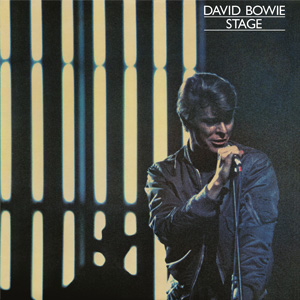
In 2018, another live album from the Isolar II tour was released, “Welcome to the Blackout“. Recorded in London, it’s another fine album that captures Bowie at his classic best with “Beauty and the Beast”, “Heroes”, “Blackout” and “Sense of Doubt” all sounding just perfect.
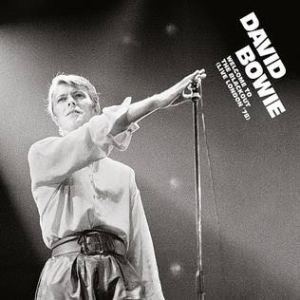
Although it didn’t sell as well as previous outputs, Bowie was on the crest of an artistic high with the release of “Heroes”. Bowie would go on to record one more album with Brian Eno to complete the so-called Berlin Trilogy, the superb and criminally under-rated “Lodger“. But that’s a story for another day…
Best Tracks: “Heroes”, V-2 Schneider, The Secret Life of Arabia
